How school lunches trained my palate
The perfect pairings that have stuck around for half a century
Release Date: March 21, 2025
Before there was school lunch, there were SpaghettiOs
When I was little, half-day kindergarten was the norm which meant each morning I got to stay home with Mom and watch game shows like Hollywood Squares with Paul Lynde in the center square, and Eye Guess, where people won BBQ grills and dinnerware sets and all the women covered their mouths when they got excited.
It also meant I didn’t get to eat lunch at school. Instead I had lunch at home, and, in my memory, at least, lunch at home was always a steaming bowl of SpaghettiOs. For those too young, or too health conscious to know the childhood joy of SpaghettiOs, let me explain: Imagine you have before you a bowl of spaghetti, but instead of being long and boring, each strand has been shaped into a circle. And instead of being covered with meat sauce or maybe even meatballs, these perfect little rings are smothered in a runny sauce that tastes like someone watered down cheap ketchup and then mixed in the powder that comes with boxed macaroni and cheese.
Sounds delicious, right? No wonder I was so excited to start first grade and get to each school lunches!
All kidding aside, I loved SpaghettiOs as a child. It was only later that I realized just how awful they tasted. Plus, who wasn’t drawn in by their jingle, Oh-Oh, SpaghettiOs!
The National School Lunch Act and the Milk Monitor
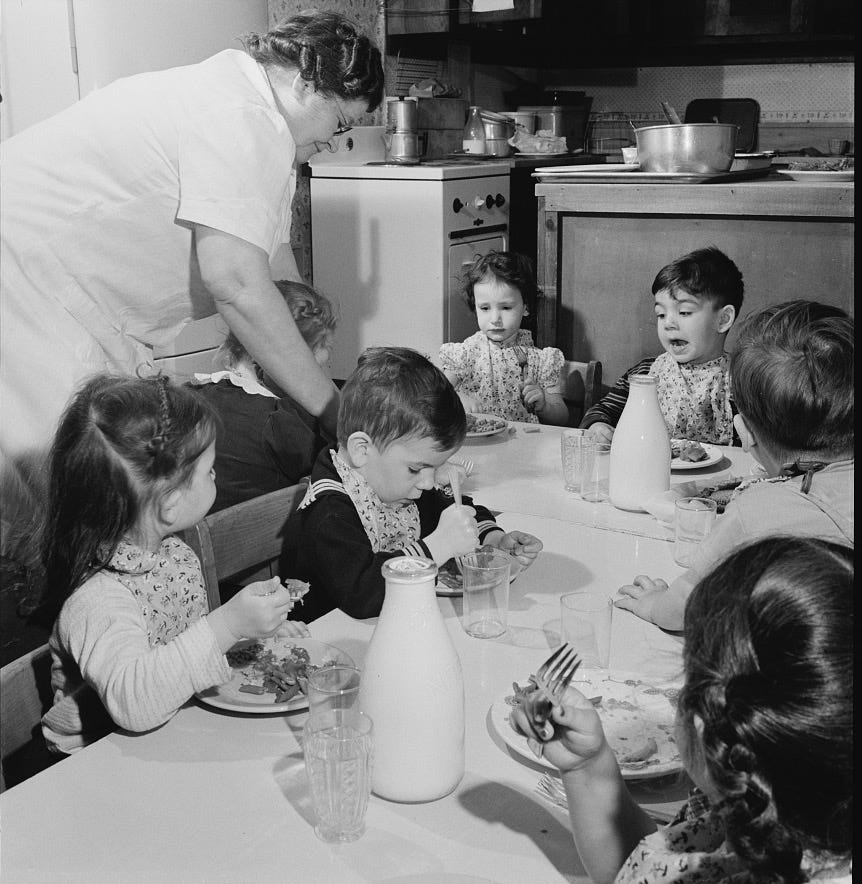
Although the National School Lunch Act wasn’t established until 1946, American school kids were enjoying government-sponsored and supported school lunches as far back as 1935. The Great Depression meant food shortages in some places, and food surpluses in others — the issue was often transportation costs, so the government stepped in and offered local school districts local food for local kids. Win-Win-Win.
That program continued during WWII as part of the War Food Administration, and in on June 4, 1946, President Harry Truman signed The National School Lunch Act into law.
"Today, with food prices soaring and rapidly getting out of reach of the average person, a Nation-wide school-lunch program ought to be encouraged to make nourishing food available to American children” U.S. Representative Edwin Hall (R-NY) 1946
In 1942, the U.S. Department of Agriculture labeled milk a “Victory Food”, and established the School Milk Program which provided milk to classrooms and also helped support dairy farmers during the war years.
Twenty-four years later, and two years before I started Kindergarten, the Child Nutrition Act of 1966 was signed into law by President Lyndon Johnson, and provided free and low-cost milk to school children across America.
For me, that meant that every school day I drank a bottle of milk.
Even though I only attended Kindergarten in the afternoon, we still had afternoon nap time, complete with colorful trifold nap pads and a Nap Fairy whose job it was to gently tap each of their classmates on the head with a special wand to wake them up.
After nap, came the milk.
While the role of Nap Fairy was highly coveted, I was way more excited about being the day’s Milk Monitor. It was the Milk Monitor’s job to, not only distribute the chilled glass bottles of whole milk to each student and later gather up the empties, but also to collect the shiny foil caps.
And those caps were a precious commodity in Kindergarten! Way more precious that the acorn rings we made by rubbing acorn caps across the asphalt on the playground.
Milk caps could be traded, they could be rolled up into beads and strung together to make bracelets and necklaces, they could be used as bookmarks and secret club tokens. Foil milk caps represented possibilities in my elementary school, and even as we progressed from kindergarteners to first, second and third graders, being chosen as the Milk Monitor was a gig with benefits.
Lunch combos that stand the test of time
As part of the National School Lunch Act, the government established guidelines for what a school lunch should include:
whole milk
protein-rich food including fresh or processed meat, poultry meat, cheese, cooked or canned fish, dry peas or beans or soy beans, peanut butter or eggs
raw, cooked or canned vegetables or fruits
bread, muffins or hot bread made of whole grain cereal
or enriched flourbutter or fortified margarine 3
How schools met those requirements, however, was up to them.
At Washington Elementary School, our school lunch ladies were especially fond of grilled cheese sandwiches with tomatoes soup, sloppy Joes with corn, and fish sticks with shoestring potatoes.
And, no matter the day, we could count on one of four dessert food groups:
white sheet cake with frosting
vanilla pudding with a dollop of whipped cream
a chocolate brownie with chocolate frosting
a cup of Jell-O topped with canned fruit cocktail.
To this day, I can’t comfortably eat a grilled cheese without tomato soup or bare to eat vanilla pudding.
Not all meals are created equal
Although some lunch combos have always been found in school cafeterias — I’m talking to you, grilled cheese and tomato soup — schools in different parts of America usually offered their students options more in keeping with what they might be eating at home.
Here are some combos I found in looking at school lunch menu announcements in various hometown newspapers from the 1970s.
chili con carne with cracker and cheese, and carrot sticks
baked salmon patty with roasted potato wedges
red beans and rice with smoked sausage, cornbread and stewed okra
turkey and gravy over rice with steamed broccoli
cheese enchiladas with red sauce and refried beans, and a cinnamon-sugar sopapilla
chicken and noodles over mashed potatoes with steamed carrots
Salisbury steak with brown gravy, noodles and green beans
Every-other-day brown bags
I’m not sure exactly how it started, but sometime near the beginning of seventh grade, our first year of junior high, my best friend and I decided school lunches were no longer for us.
Instead, Linda and I took turns bringing a lunch we shared, and every day it was the exact same thing: one Velveeta and mayo sandwich on white crustless bread and one Red Delicious apple.
Day in and day out.
When Linda got braces after Christmas break, we quit the apple for awhile, but eventually it returned, now cut into slices.
I can honestly say I haven't eaten Veleeta for three decades, but thinking about those sandwiches and the friendship they represented, still brings a smile to my face.
Also, if you’re interested in the history of Velveeta, which, by the way, is NOT cheese according to the Food and Drug Administration, check out this 2013 piece by David Levine in the Hudson Valley (NY) Magazine.
Please hit the ❤️ button at the bottom of the page to help this story reach more readers. And if you’re not already a subscriber, I’d love to have you join me. Thanks!
Not your lunch lady’s grilled cheese
One of the vintage school lunch items I came across was something called a Cheese Zombie, and, as best as I can tell, it originated somewhere in the Pacific Northwest. Not quite a traditional grilled cheese to accompany tomato soup, but interesting enough that I wanted to try it.
And it was delicious!
I doubt a Cheese Zombie will replace my usual grilled cheese, but it will definitely make it into the rotation. See the recipe below.
Copyright 2025 Lori Olson White
Cheese Zombies
Ingredients:
1 tablespoon plus 1 teaspoon yeast
1 1/2 cups warm water
1 1/4 cups flour
1/2 tablespoon salt
2 tablespoons of sugar
2 tablespoons plus 1 teaspoon of shortening
Processed cheese (American cheese
or Velveeta recommended),
enough to cover your dough
Instructions:
Mix-knead until smooth, about 10-15 minutes. Divide into half. Let dough rise for 10-15 minutes.
Press half of the dough into an 11-by-14-inch pan and put cheese on top.
Stretch the other half of dough over the top. Butter top lightly. Seal around the edges.
Let dough rise again to double its size. Bake until lightly brown at 350 degrees. 3
Your turn and your culinary traditions
What was your typical school lunch? Was it packed from home, bought from the cafeteria, or traded with friends? Describe the most memorable meal you had.
Are there any food pairings from your school days that still bring you comfort? (Think peanut butter and jelly, chocolate milk and pizza, or a specific snack and drink.) Why do they still resonate with you?
If you could recreate one school lunch exactly as you remember it, what would be on the tray or in the lunchbox? How do you think it would taste now compared to back then?
Did your school have any unique lunchtime traditions, like pizza Fridays, taco Tuesdays, or a special dessert day? How did those traditions shape your memories of school meals?
Did you ever trade parts of your lunch? If so, what foods were most valuable to you and your friends? What does that say about your food preferences at the time?
Was there a distinct difference between the meals you ate at school and those you had at home? Were there any cafeteria foods you secretly loved (or despised)?
Where did you sit during lunch? Who did you sit with? How did your lunch experience reflect your friendships, social circles, or even your personality?
What specific smells, sounds, or sights bring back school lunch memories for you? Are there certain foods that instantly transport you back to that time?
Did you try any foods for the first time at school? Were there meals or snacks you initially disliked but grew to love (or vice versa)?
Looking back, how did your school lunches shape your relationship with food today? Did they influence your preferences, eating habits, or the way you prepare meals for yourself or others?
Submit your stories and recipes today to The Humble Potato Salad Recipe & Story Book
My little walk down memory lane with potato salad seems to have sparked a lot of great memories for others, as well.
As I was reading thru all the comments and messages, it got me thinking: Wouldn’t it be fun to collect all of our potato salad recipes and stories in one place and share them with the world?
Welcome to The Humble Potato Salad Recipe & Story Book.
Ok, not a book, exactly, but maybe a free sharable PDF ;)
If you want to participate - and zero pressure - write up your favorite potato salad story and recipe and either post it on your newsletter and tag me so I can find it, or just drop it to me in a private message. Throw in a photo if you like, too!
And, if you've already posted a potato salad story and recipe, please send those links along to be included, as well.
I’ll continue to gather stories and recipes until May 1, and post a link to the PDF in time for Memorial Day picnicking.
In case you missed it
If stories at the intersection of food and family history are what you’re looking for, look no further than our archives! Here are a few of my favorites.
Please hit the ❤️ button at the bottom of the page to help this story reach more readers. And if you’re not already a subscriber, I’d love to have you join me. Thanks!
Culinary History is Family History is reader-supported. When you buy through links on our site, we may earn an affiliate commission.
End Notes:
1 Gladys L. Baker and Wayne D. Rasmussen, “Chronology of the War Food Administration, Including Predecessor and Successor Agencies, August 1939 to December 1946, United States Department of Agriculture, Bureau of Agricultural Economics, November 5, 1950, Washington, DC.
2 Elise Hinde, The National School Lunch Act of 1946, The Congress Report, December1, 2016, https://www.thecongressproject.com/national-school-lunch-act-1946
3 History of the National School Lunch Program, https://www.fns.usda.gov/nslp/program-historyhttps://www.fns.usda.gov/nslp/program-history
4 1…2…3…Dough!, Yakima Herald-Republic, Yakima, WA, December 4, 2017.

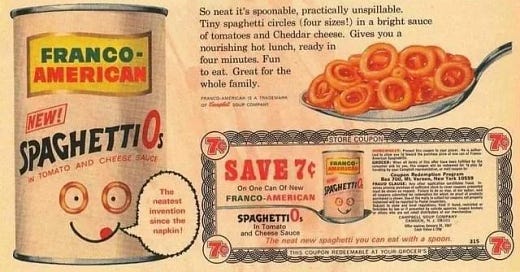



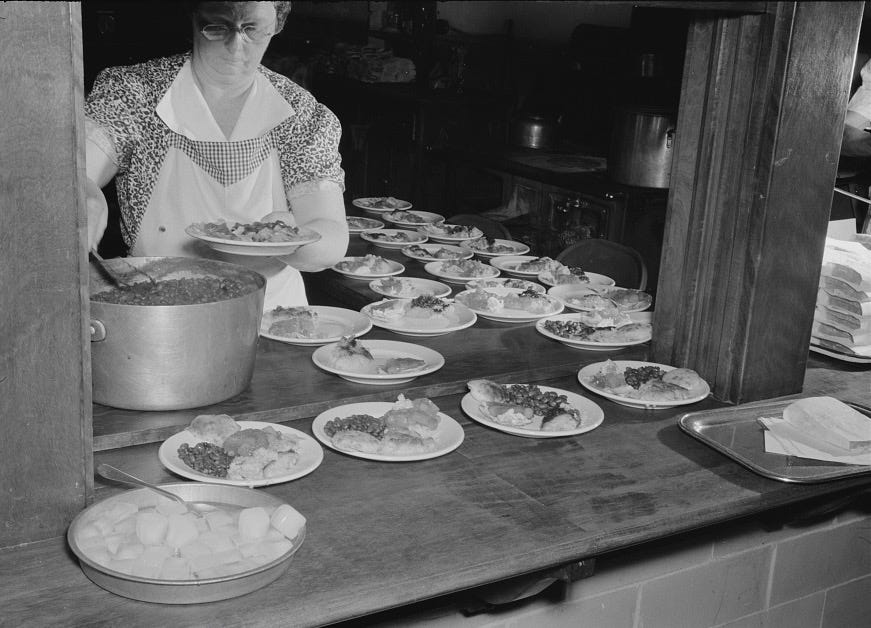
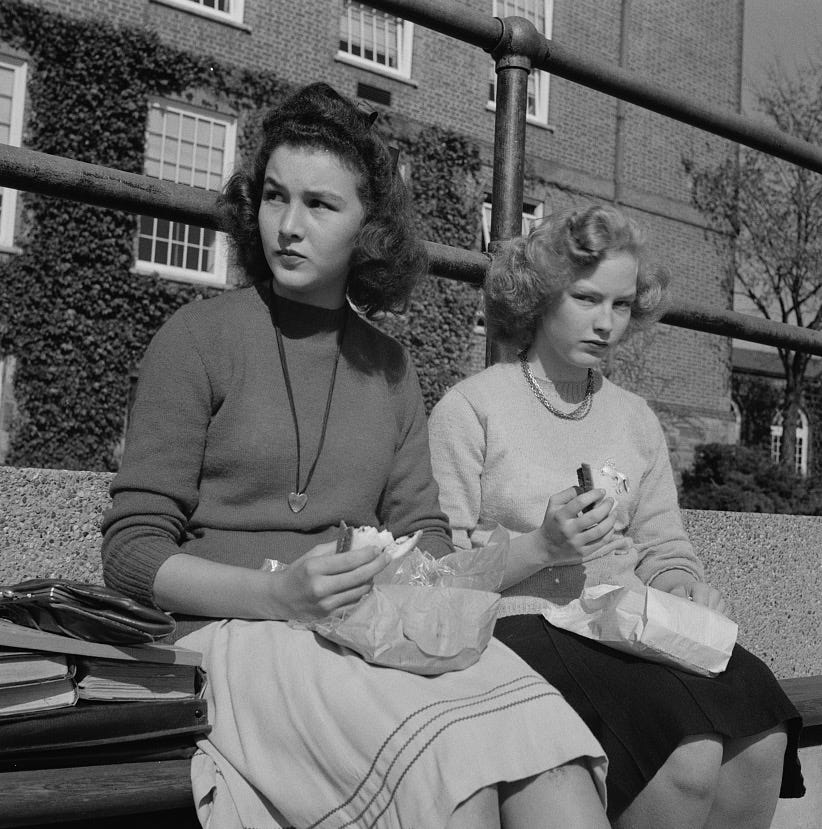
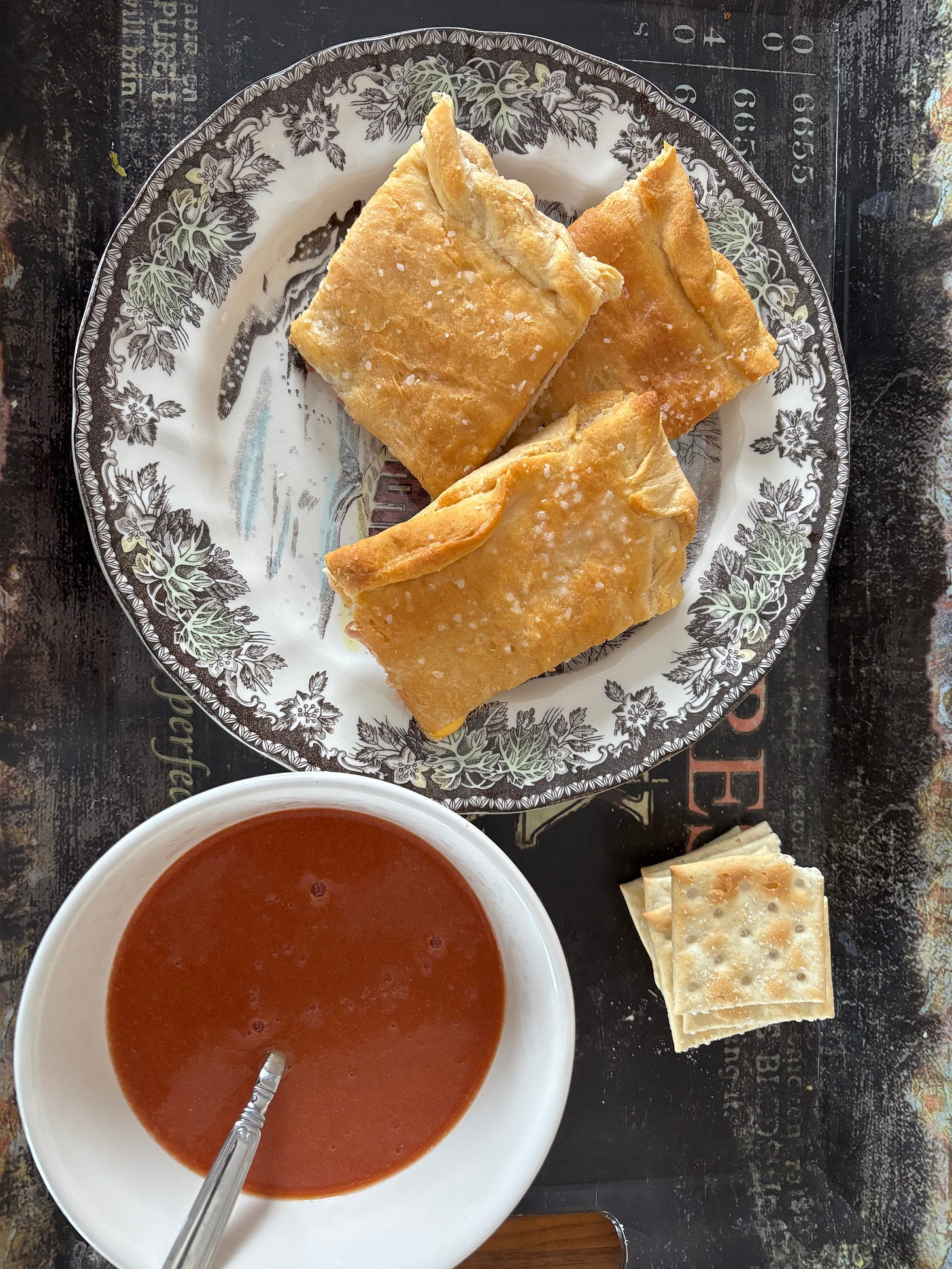

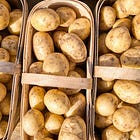

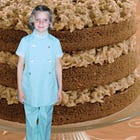
Loved this post! My husband and I went to the same elementary school and we both still require chili to be accompanied by a peanut butter sandwich. That combo was one of the main ones at our school and we had it often.
I can still see the Bologna sandwich in wax paper and the thermos of chocolate milk in my lunch box! Wonderful post, Lori!